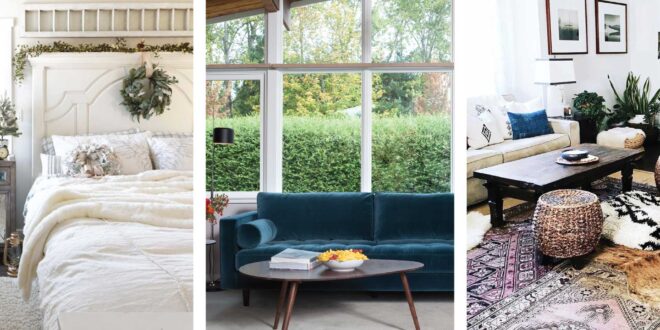Embarking on Your Interior Design Journey: Finding Your Perfect Style
Interior design, at its heart, is about creating spaces that reflect your personality, cater to your needs, and ultimately, enhance your life. It’s more than just arranging furniture; it’s about weaving a narrative, telling a story through color, texture, and form. With so many different interior design styles to choose from, however, the journey to creating your dream home can feel overwhelming. Where do you even begin? This comprehensive guide will explore a wide range of popular interior design styles, providing you with the knowledge and inspiration to discover the perfect aesthetic for your unique space.
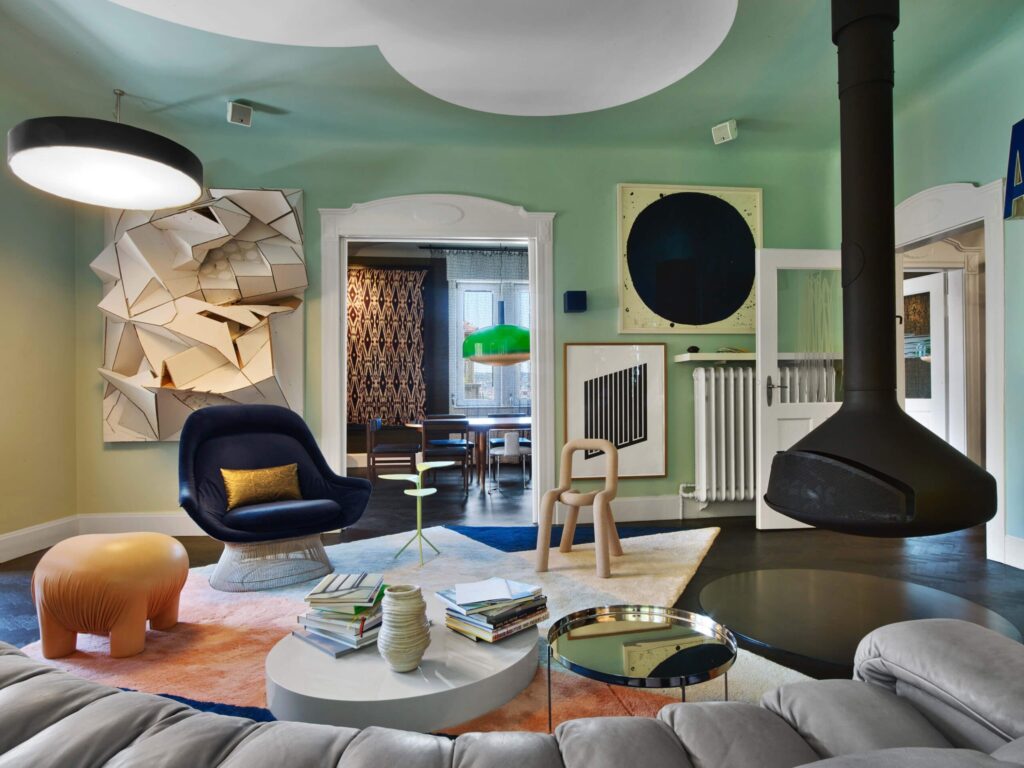
Before diving in, it’s important to remember that there are no hard and fast rules. Feel free to mix and match elements from different styles to create a truly personalized look. The key is to understand the fundamental principles of each style and then adapt them to your own taste and preferences.
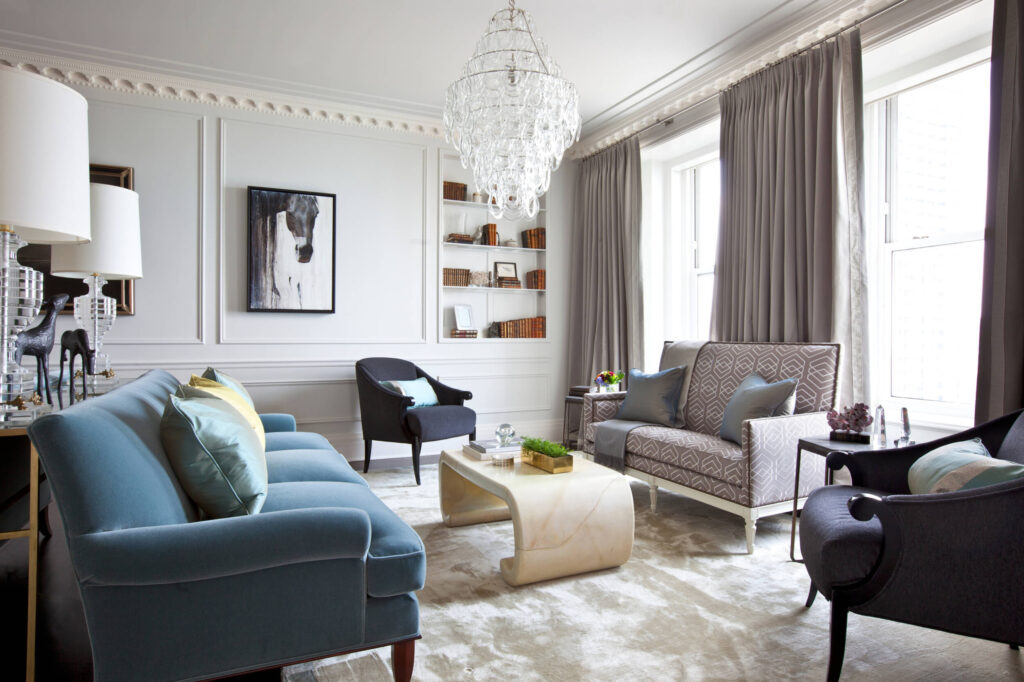
Classic and Timeless Styles
1. Traditional Interior Design: A Celebration of History and Elegance
Traditional interior design evokes a sense of history, formality, and timeless elegance. It’s characterized by rich colors, ornate details, and classic furniture pieces. Think grand chandeliers, elaborate moldings, and luxurious fabrics like velvet and silk.
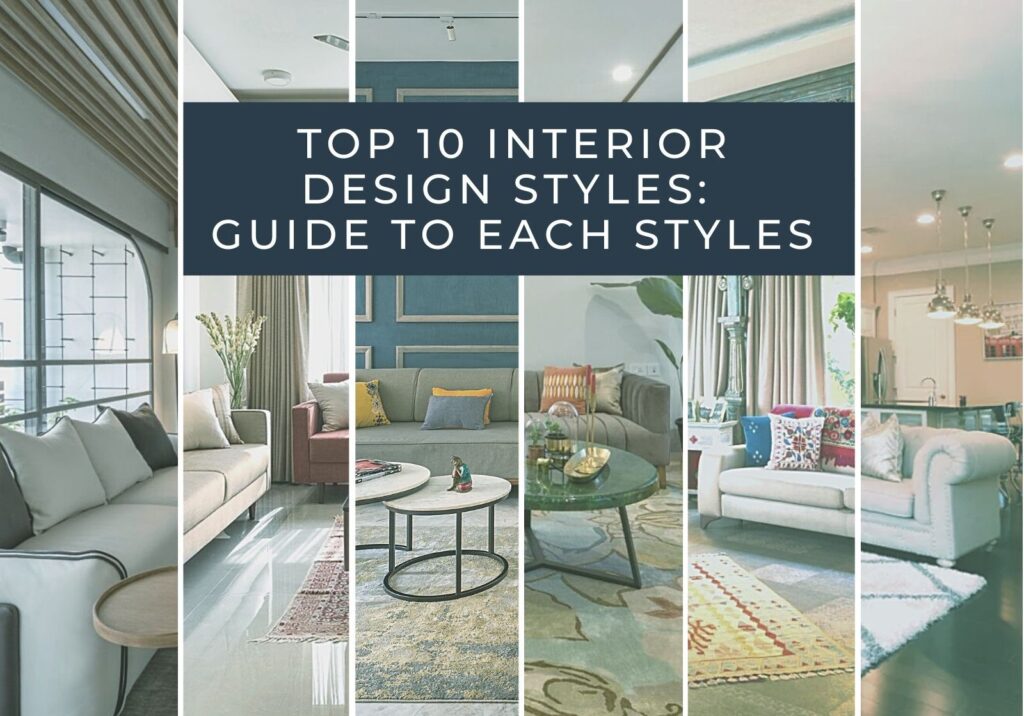
Key Elements:
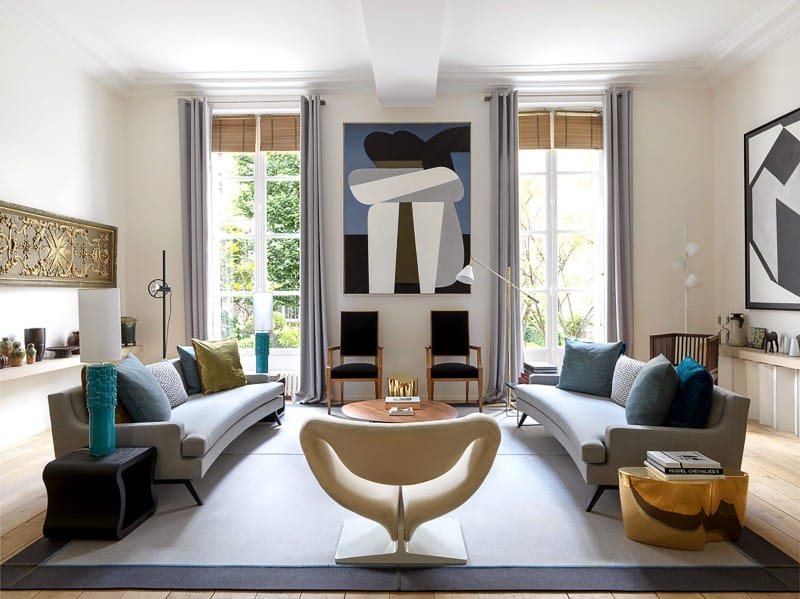
- Color Palette: Deep reds, golds, greens, and browns are common choices, often used in combination to create a warm and inviting atmosphere.
- Furniture: Antique or antique-inspired furniture with intricate carvings and detailing is a hallmark of this style. Look for pieces with cabriole legs, claw feet, and rolled arms.
- Fabrics: Luxurious fabrics like velvet, silk, brocade, and damask are used extensively for upholstery, curtains, and bedding.
- Accessories: Traditional accessories include antique mirrors, porcelain vases, oil paintings, and decorative objects that reflect a sense of history and refinement.
- Architectural Details: Crown molding, wainscoting, and hardwood floors are essential elements of traditional interiors.
Who it’s for: Those who appreciate history, formality, and a sense of timeless elegance.

2. Transitional Interior Design: Bridging the Gap Between Traditional and Modern
Transitional interior design is a harmonious blend of traditional and modern styles, creating a balanced and sophisticated aesthetic. It’s characterized by clean lines, neutral colors, and a focus on comfort and functionality.
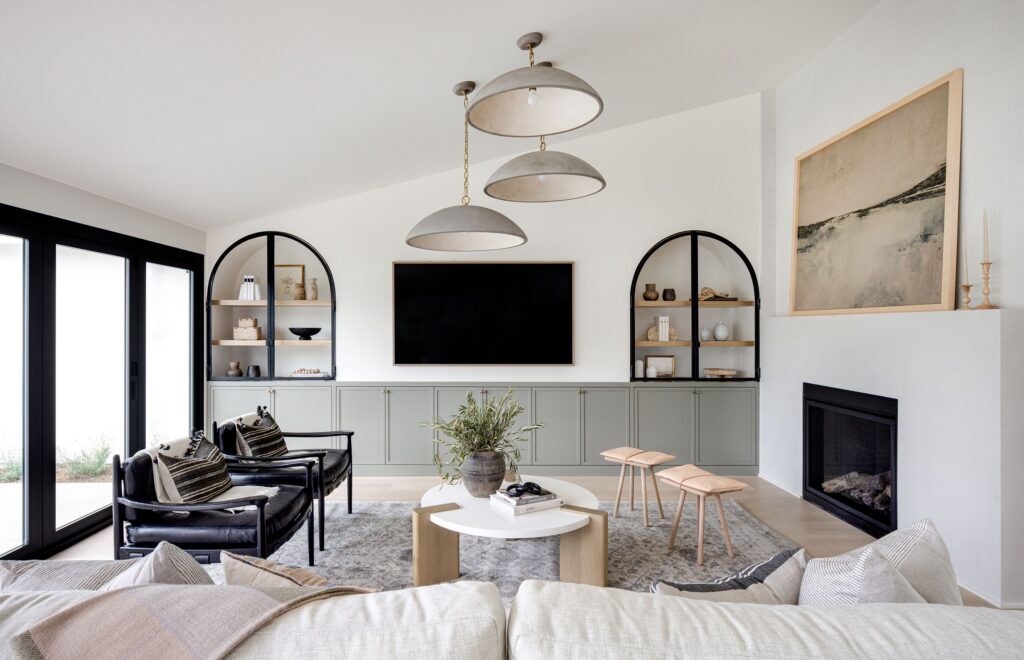
Key Elements:
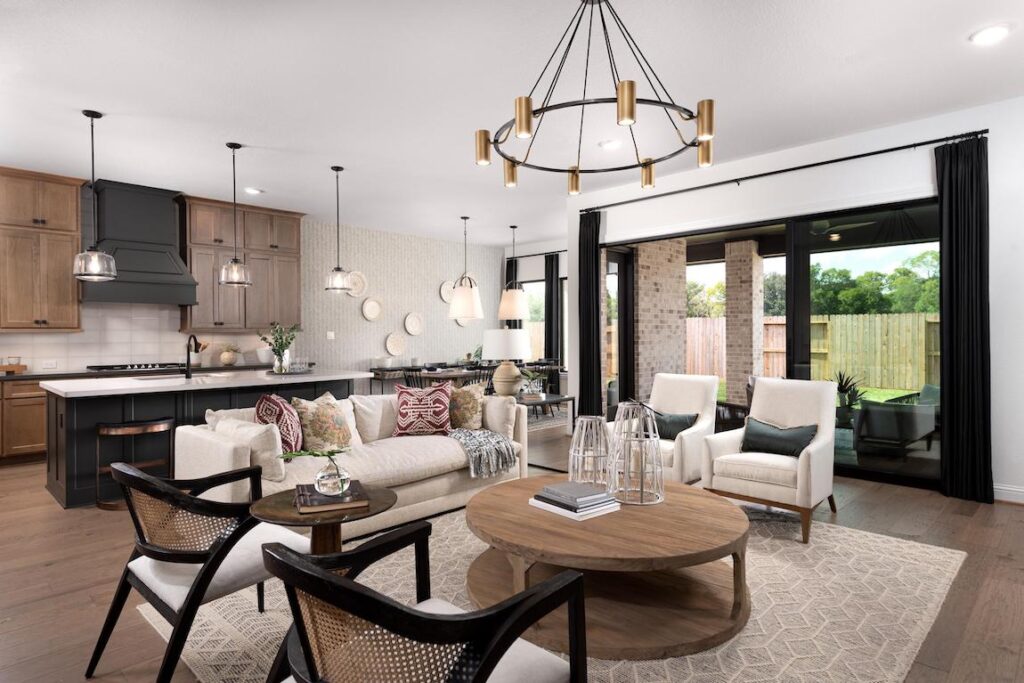
- Color Palette: Neutral colors like beige, gray, and cream are the foundation of transitional design. Accents of darker colors like navy or chocolate brown can be used to add depth and interest.
- Furniture: A mix of traditional and modern furniture pieces is used, with an emphasis on clean lines and comfortable upholstery.
- Fabrics: A variety of textures are used, including linen, cotton, wool, and leather.
- Accessories: Accessories are kept to a minimum, with a focus on quality over quantity. Think simple vases, abstract artwork, and geometric patterns.
- Architectural Details: A mix of traditional and modern architectural details, such as crown molding and recessed lighting, is common.
Who it’s for: Those who appreciate a balance between traditional and modern aesthetics, comfort, and functionality.
3. French Country Interior Design: Rustic Charm and Romantic Elegance
French Country interior design embodies rustic charm and romantic elegance, inspired by the countryside of France. It’s characterized by soft colors, natural materials, and a sense of warmth and informality.
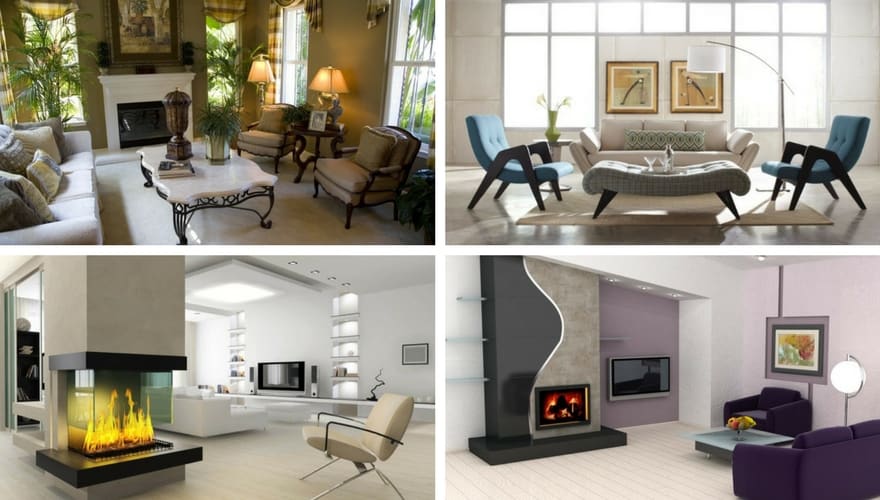
Key Elements:
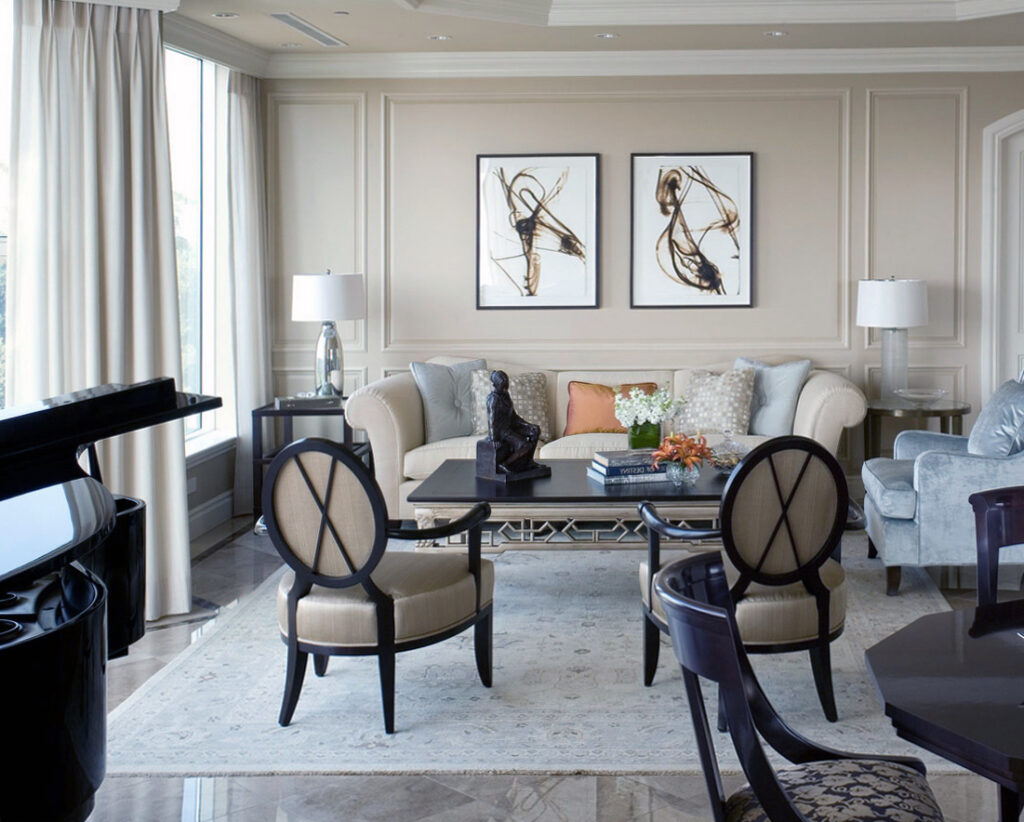
- Color Palette: Soft and muted colors like lavender, pale yellow, cream, and robin’s egg blue are common choices.
- Furniture: Antique or antique-inspired furniture with distressed finishes and carved details is a hallmark of this style.
- Fabrics: Natural fabrics like linen, cotton, and toile are used extensively for upholstery, curtains, and bedding.
- Accessories: French Country accessories include antique clocks, porcelain pitchers, floral arrangements, and wrought iron accents.
- Architectural Details: Exposed beams, stone walls, and hardwood floors are essential elements of French Country interiors.
Who it’s for: Those who appreciate rustic charm, romantic elegance, and a sense of warmth and informality.
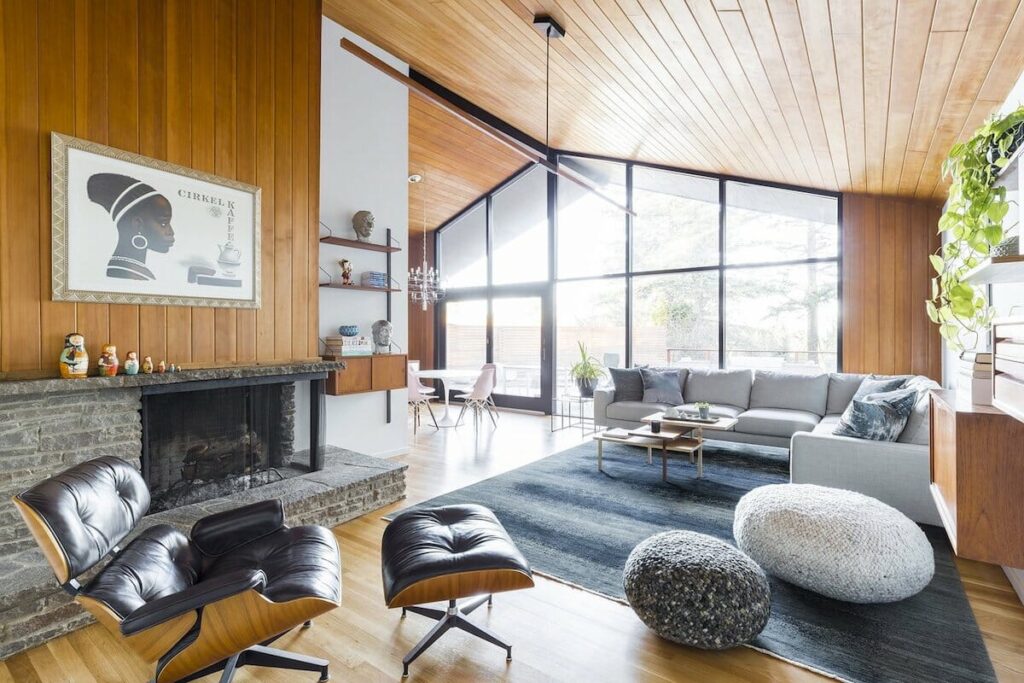
Modern and Contemporary Styles
4. Modern Interior Design: Embracing Minimalism and Functionality
Modern interior design emphasizes clean lines, simplicity, and functionality. It’s characterized by a minimalist approach, with a focus on open spaces and natural light.
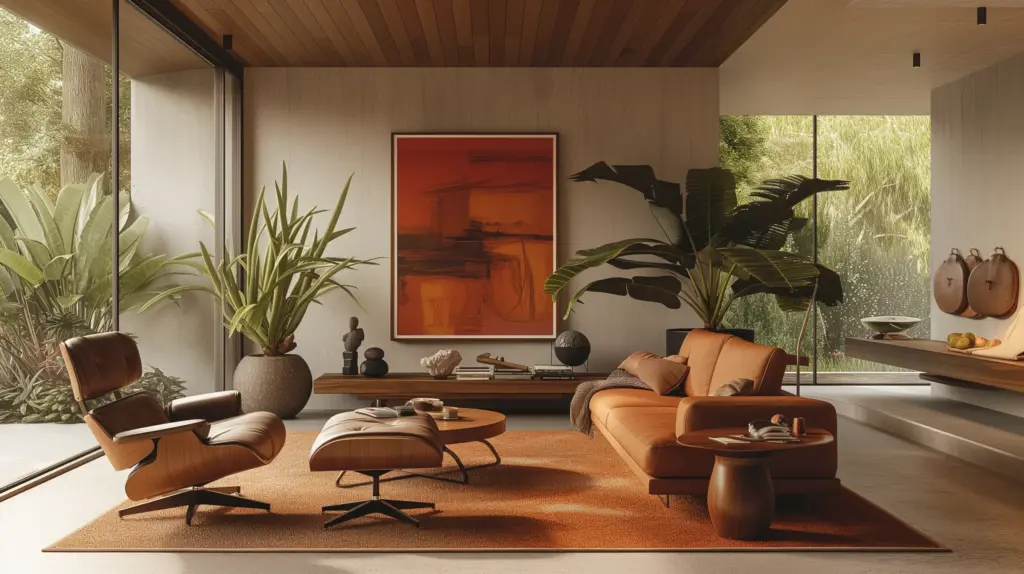
Key Elements:
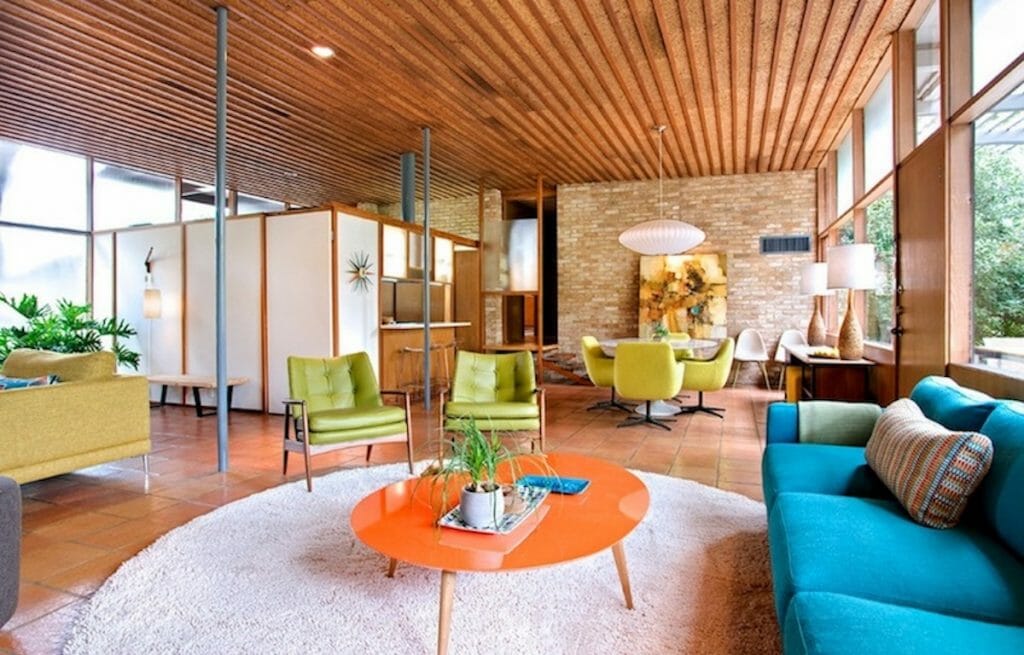
- Color Palette: Neutral colors like white, black, and gray are dominant, with pops of color used sparingly.
- Furniture: Furniture is typically made of clean-lined materials like metal, glass, and wood. It emphasizes function over ornamentation.
- Fabrics: Smooth and sleek fabrics like leather, vinyl, and microfiber are commonly used.
- Accessories: Accessories are kept to an absolute minimum, with a focus on geometric shapes and abstract art.
- Architectural Details: Open floor plans, large windows, and flat roofs are characteristic of modern architecture.
Who it’s for: Those who appreciate simplicity, functionality, and a minimalist aesthetic.
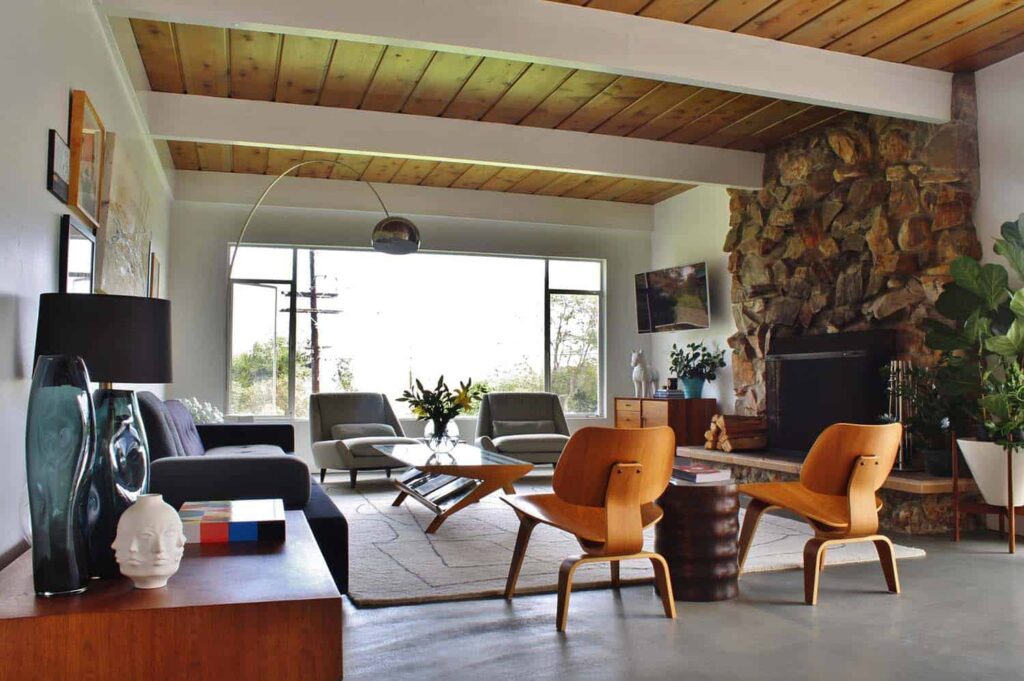
5. Contemporary Interior Design: Constantly Evolving and Embracing the New
Contemporary interior design is often confused with modern, but it’s important to understand the distinction. Contemporary design is constantly evolving and reflects the current trends, while modern design refers to a specific period (roughly the early to mid-20th century). Contemporary design embraces innovation, experimentation, and a focus on the present moment.
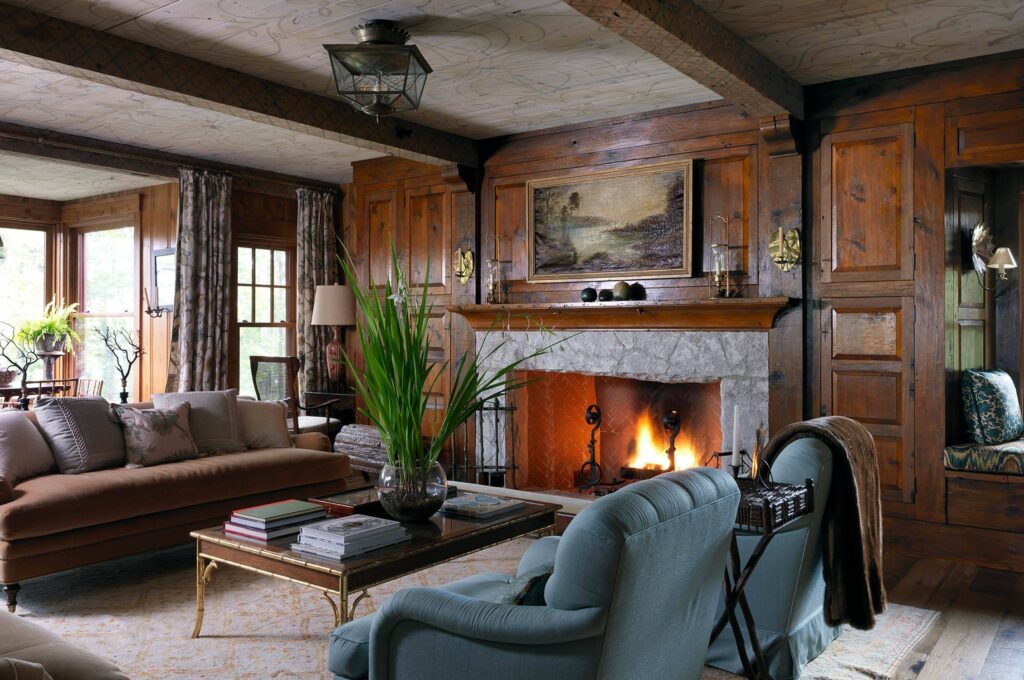
Key Elements:
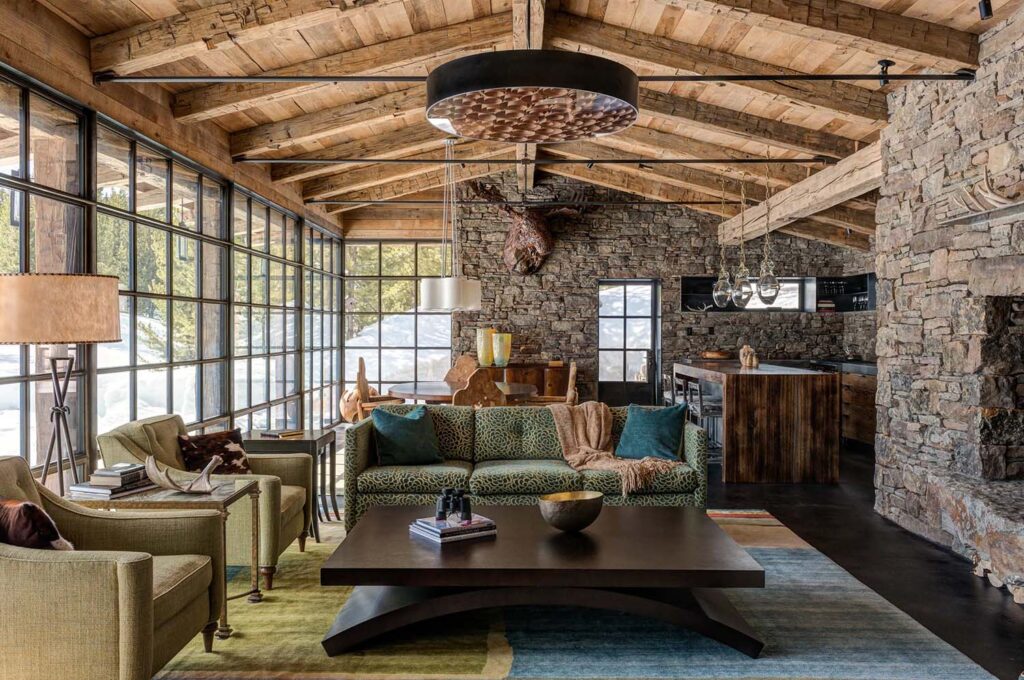
- Color Palette: Contemporary color palettes are often neutral, but can also incorporate bold and unexpected colors.
- Furniture: Furniture is often sculptural and features clean lines, but can also incorporate organic shapes and unexpected materials.
- Fabrics: A wide range of fabrics can be used, from natural materials like linen and cotton to synthetic materials like microfiber and vinyl.
- Accessories: Accessories can be minimal or maximal, depending on the specific design. The key is to create a sense of balance and harmony.
- Architectural Details: Contemporary architecture often features open floor plans, large windows, and sustainable materials.
Who it’s for: Those who appreciate innovation, experimentation, and staying up-to-date with the latest trends.
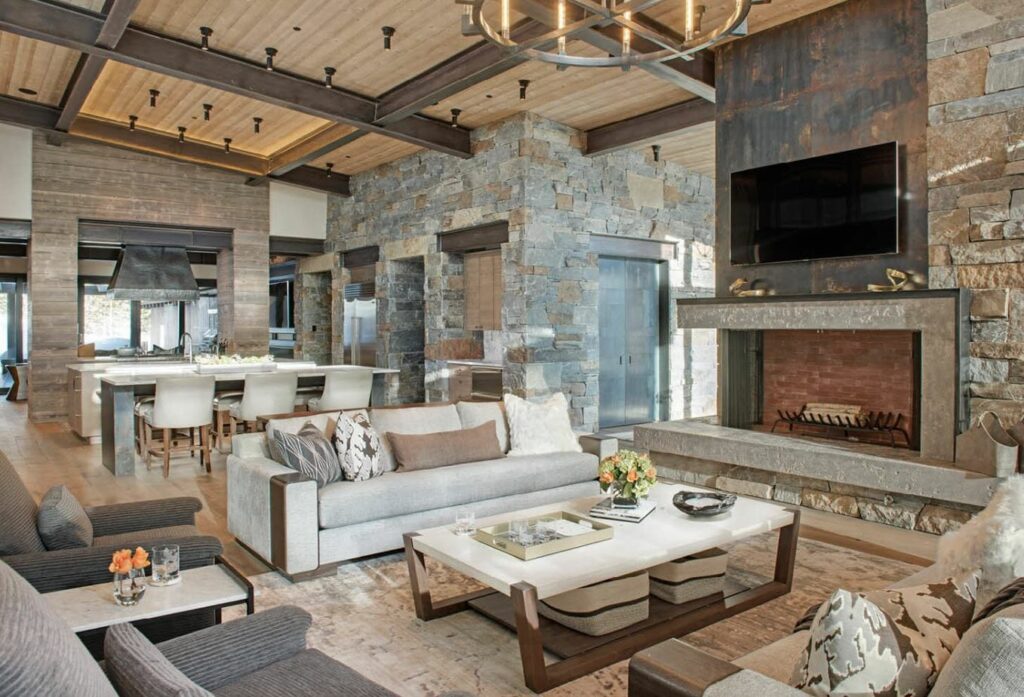
6. Mid-Century Modern Interior Design: A Retro Revival of the 1950s and 1960s
Mid-Century Modern interior design celebrates the clean lines, organic shapes, and functional aesthetic of the 1950s and 1960s. It’s characterized by a minimalist approach, with a focus on natural materials and vibrant colors.
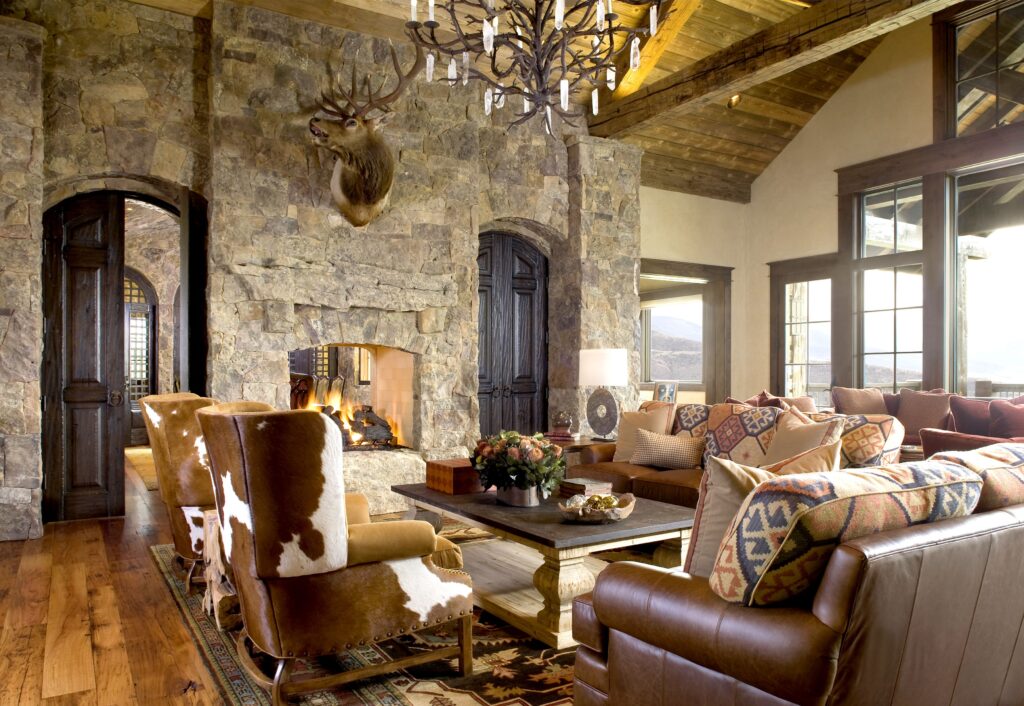
Key Elements:
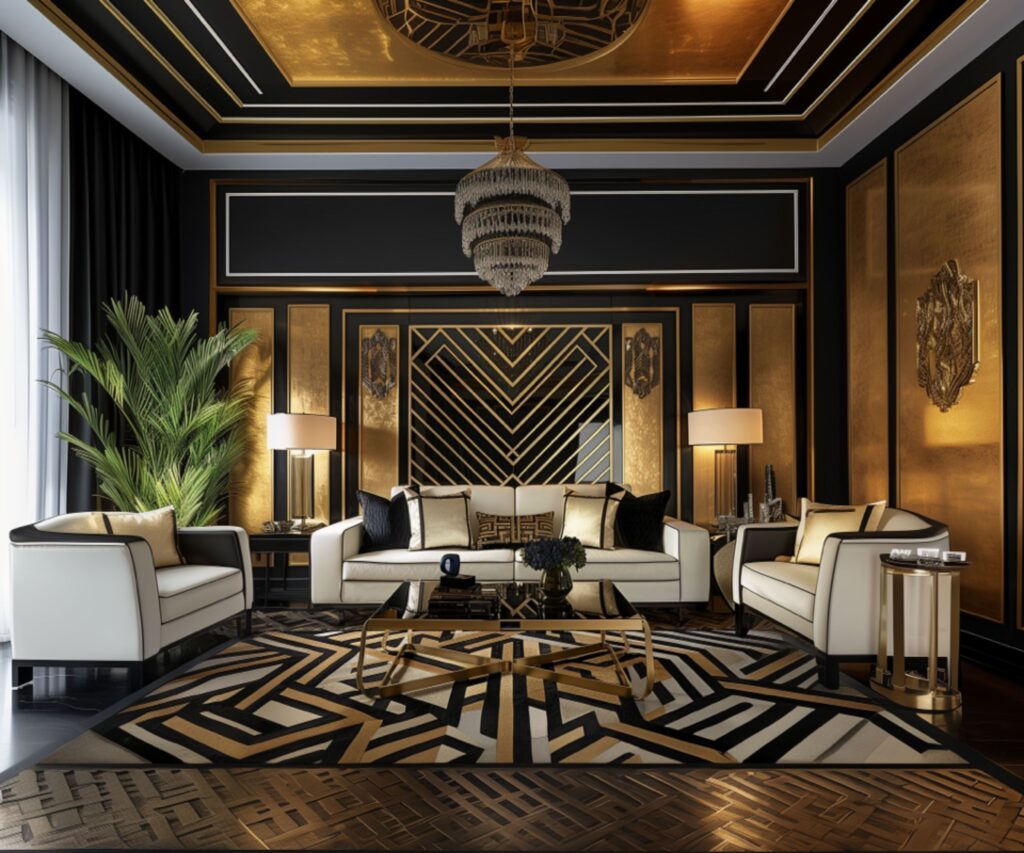
- Color Palette: Warm and earthy tones like olive green, mustard yellow, and burnt orange are common choices, often paired with neutral colors like white and gray.
- Furniture: Furniture is typically made of wood, metal, and plastic, with clean lines and organic shapes. Think Eames chairs, Saarinen tables, and Danish modern sofas.
- Fabrics: Natural fabrics like wool, cotton, and linen are often used, with geometric patterns and bold colors.
- Accessories: Mid-Century Modern accessories include geometric lamps, abstract art, and vintage pottery.
- Architectural Details: Open floor plans, large windows, and exposed brick walls are characteristic of Mid-Century Modern architecture.
Who it’s for: Those who appreciate retro style, clean lines, and a functional aesthetic.
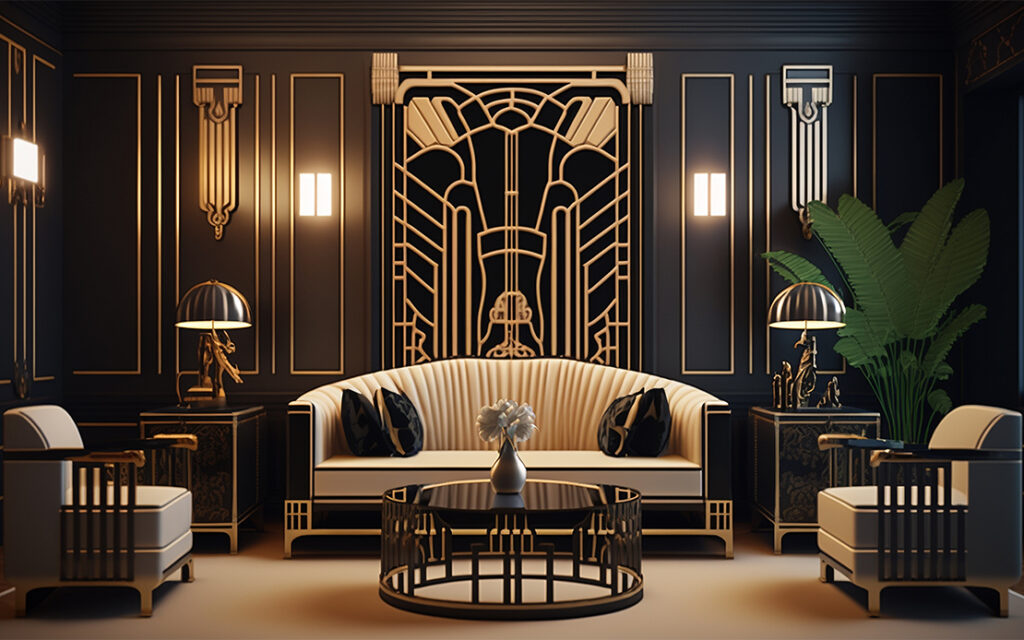
Eclectic and Global Styles
7. Bohemian Interior Design: A Celebration of Individuality and Self-Expression
Bohemian interior design embraces individuality, creativity, and a free-spirited aesthetic. It’s characterized by a mix of colors, patterns, and textures, with a focus on layering and personal expression.
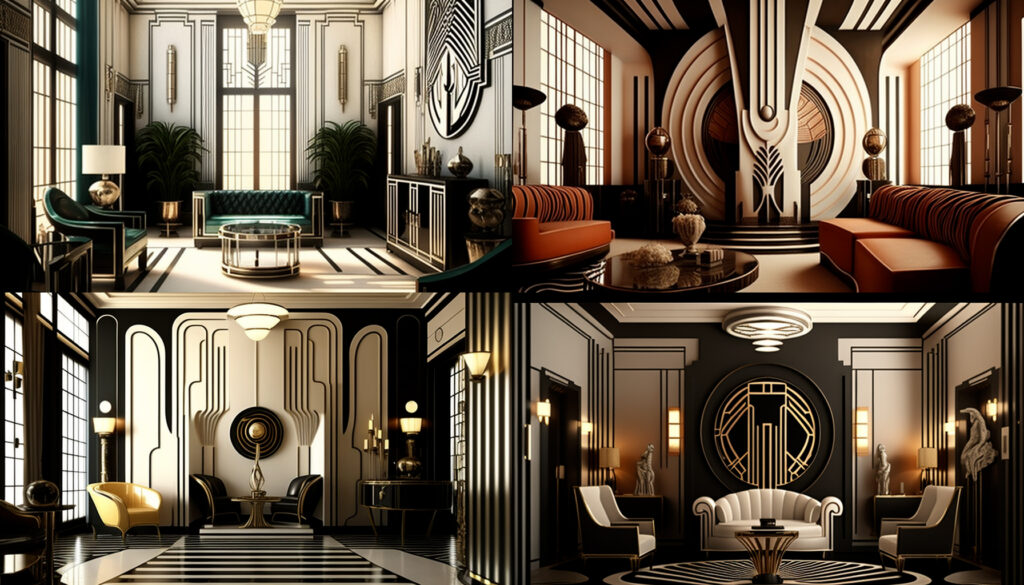
Key Elements:
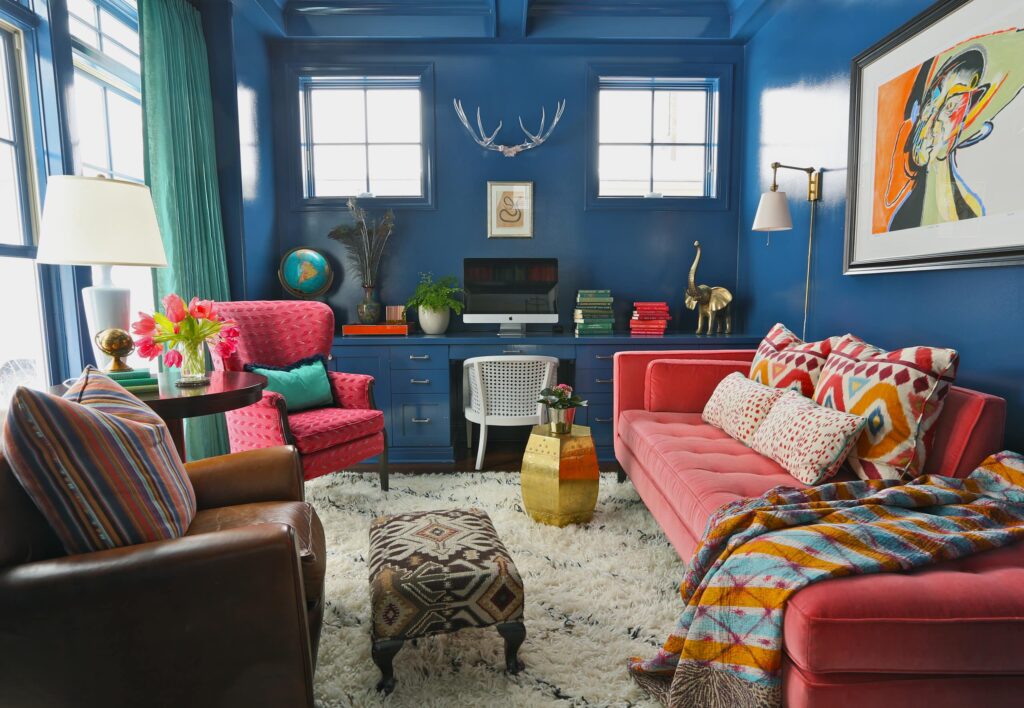
- Color Palette: Rich and vibrant colors like jewel tones, earthy hues, and metallic accents are common choices.
- Furniture: A mix of vintage, antique, and contemporary furniture pieces is used, often with an emphasis on comfort and eclecticism.
- Fabrics: A variety of fabrics are used, including velvet, silk, cotton, and linen, often with intricate patterns and textures.
- Accessories: Bohemian accessories include tapestries, throw pillows, rugs, plants, and travel souvenirs.
- Architectural Details: Bohemian interiors often feature exposed brick walls, hardwood floors, and high ceilings.
Who it’s for: Those who appreciate individuality, creativity, and a free-spirited aesthetic.
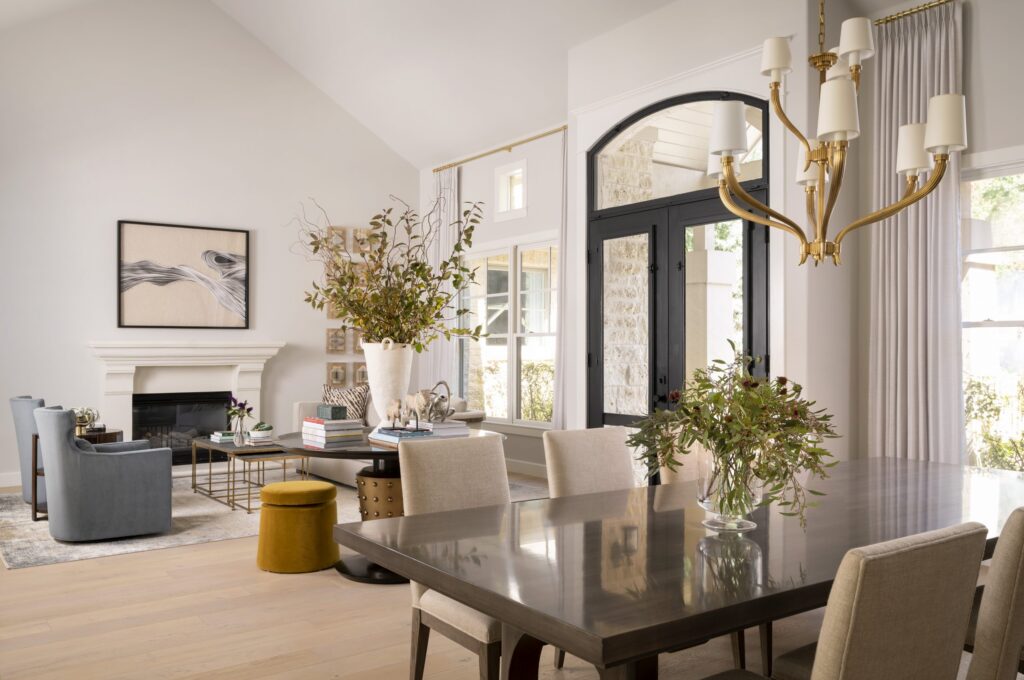
8. Eclectic Interior Design: A Carefully Curated Mix of Styles and Eras
Eclectic interior design is all about creating a unique and personalized space by mixing and matching different styles, eras, and influences. It’s a celebration of individuality and a chance to showcase your personal taste.
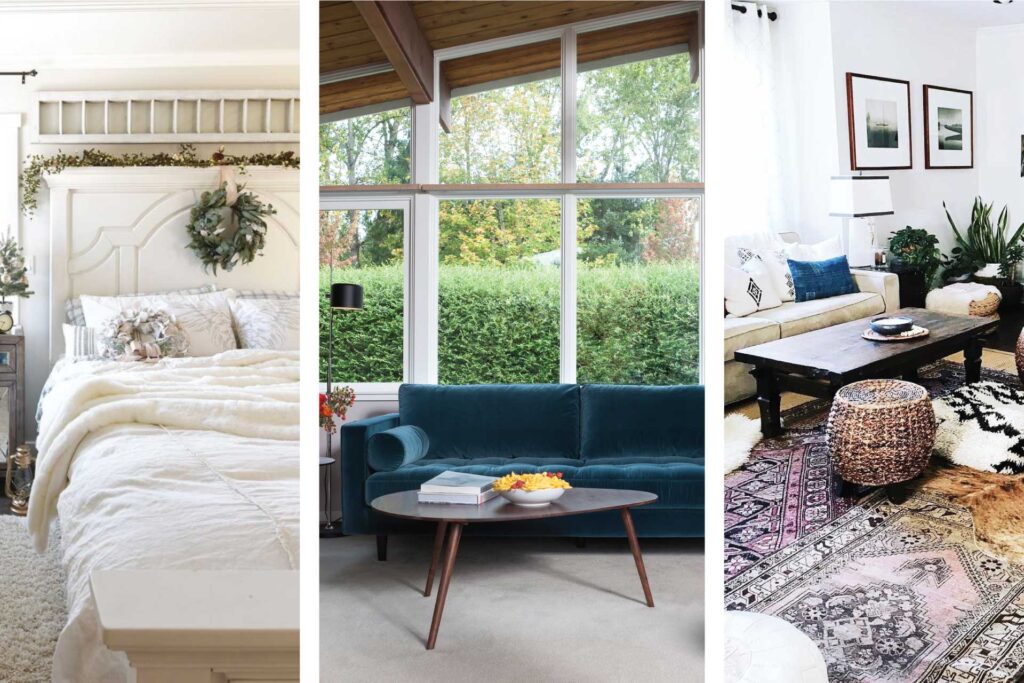
Key Elements:
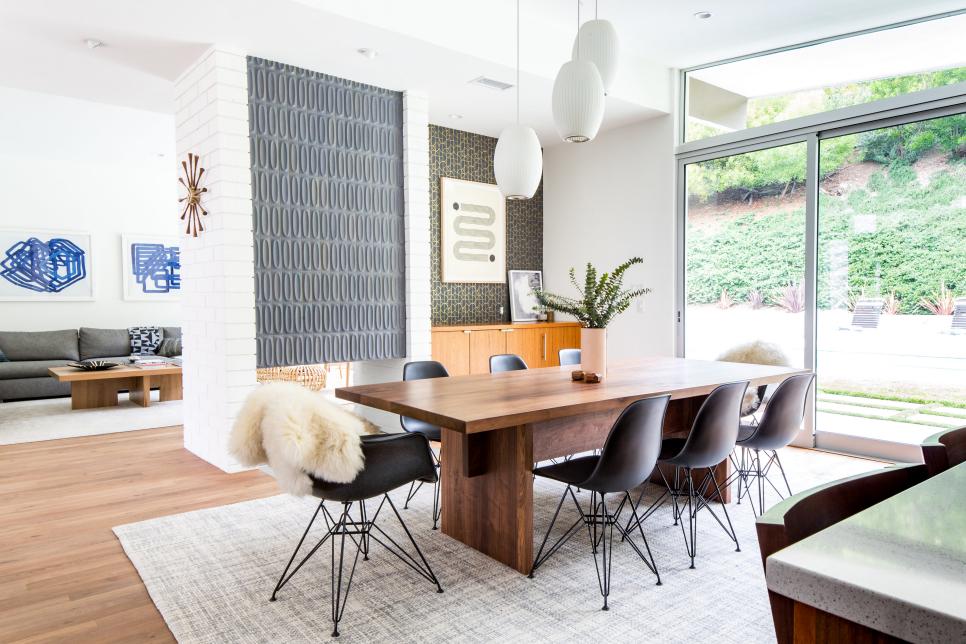
- Color Palette: There are no rules when it comes to color palettes in eclectic design. You can choose to use a cohesive color scheme or embrace a more vibrant and eclectic mix of colors.
- Furniture: Eclectic design involves mixing furniture from different eras and styles. You might pair a vintage armchair with a modern coffee table, or a rustic dining table with contemporary chairs.
- Fabrics: Use a variety of fabrics to add texture and interest to your space. Mix and match different patterns, colors, and materials.
- Accessories: Accessories are a key element of eclectic design. Use them to showcase your personality and interests. Display artwork, sculptures, books, and travel souvenirs.
- Architectural Details: Highlight any unique architectural details in your space, such as exposed brick walls, high ceilings, or original moldings.
Who it’s for: Those who love to experiment with different styles and create a truly personalized space.
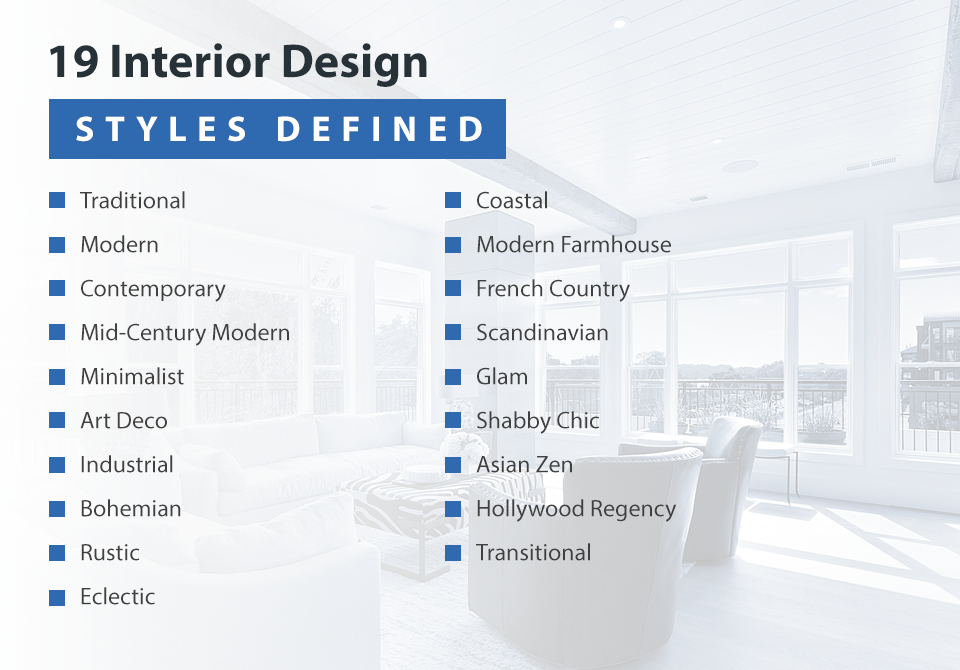
9. Scandinavian Interior Design: Simplicity, Functionality, and Hygge
Scandinavian interior design embodies simplicity, functionality, and a connection to nature. It’s characterized by light colors, natural materials, and a focus on creating a cozy and inviting atmosphere (hygge).
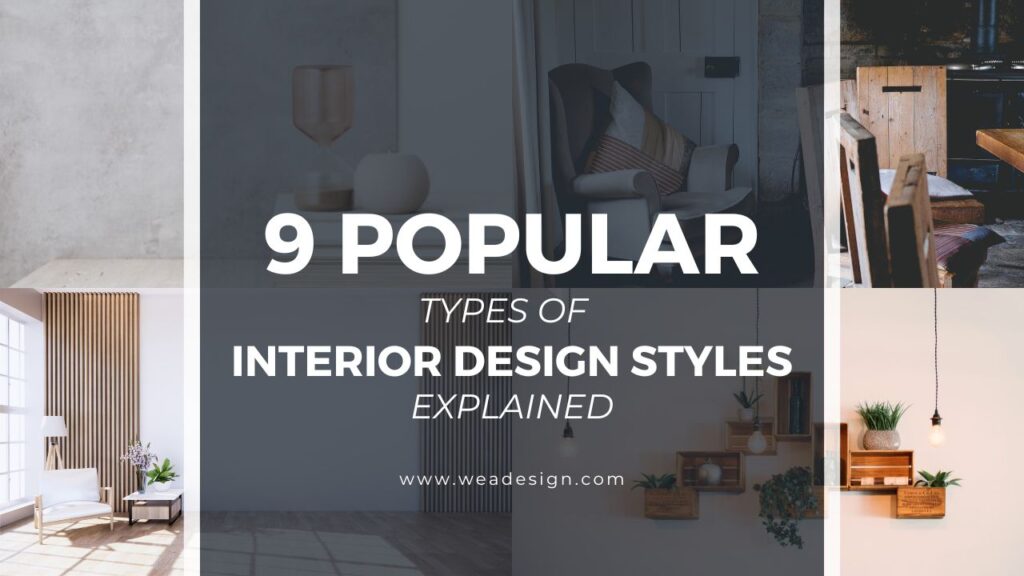
Key Elements:
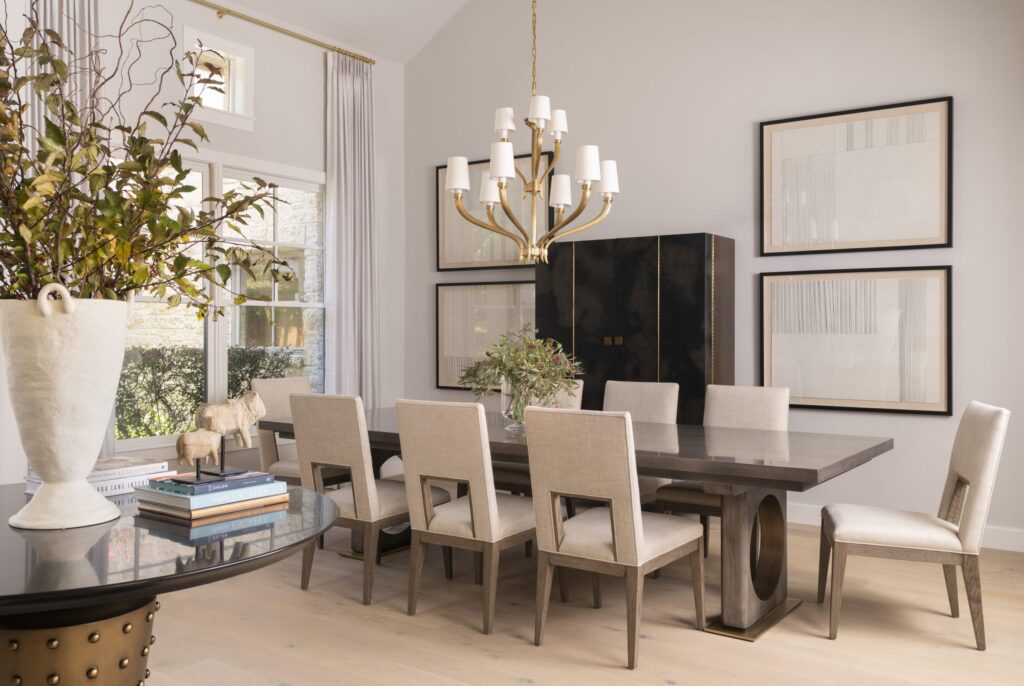
- Color Palette: Light and airy colors like white, gray, and pale blue are dominant, often paired with natural wood tones.
- Furniture: Furniture is typically made of light-colored wood, with clean lines and functional designs.
- Fabrics: Natural fabrics like wool, cotton, and linen are used extensively for upholstery, curtains, and bedding.
- Accessories: Scandinavian accessories include candles, blankets, sheepskins, and plants.
- Architectural Details: Light-filled spaces, wood floors, and simple architectural details are characteristic of Scandinavian interiors.
Who it’s for: Those who appreciate simplicity, functionality, and a cozy and inviting atmosphere.
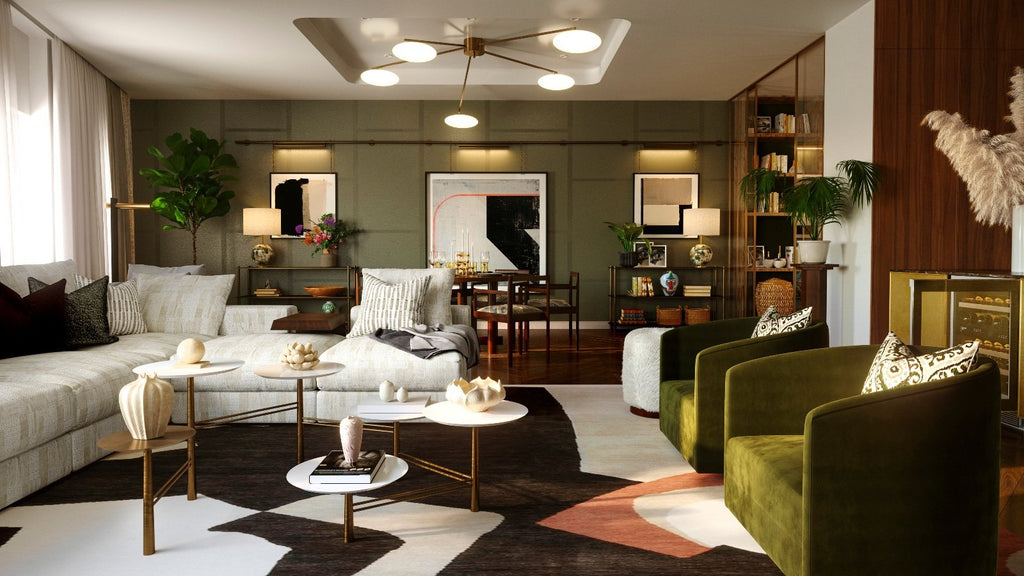
10. Coastal Interior Design: Bringing the Beach Home
Coastal interior design captures the essence of the beach, creating a relaxed and breezy atmosphere. It’s characterized by light colors, natural materials, and nautical accents.
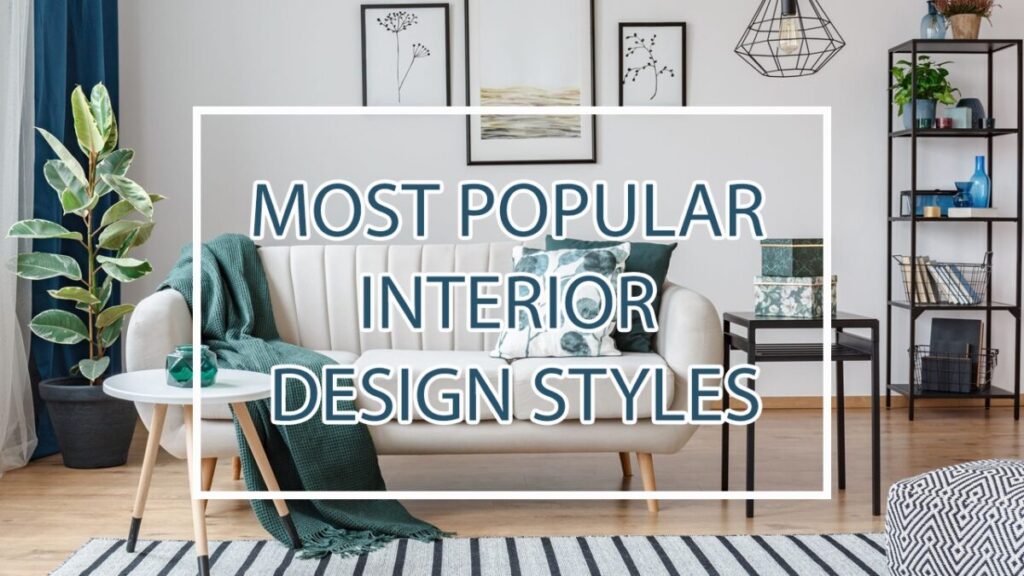
Key Elements:
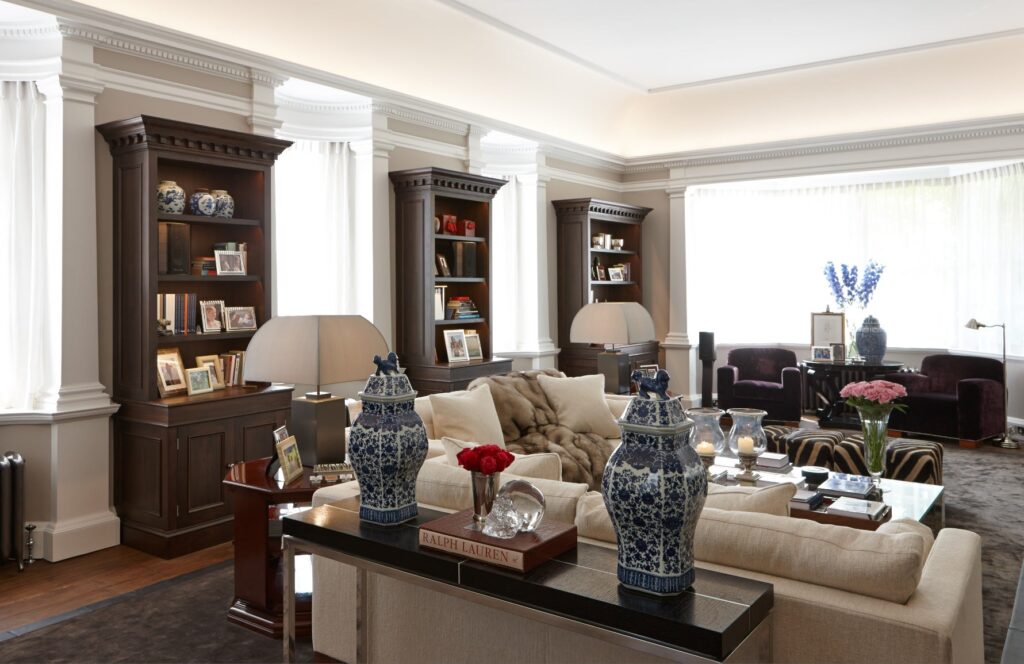
- Color Palette: Light and airy colors like white, blue, and beige are dominant, often inspired by the colors of the ocean and sand.
- Furniture: Furniture is typically made of natural materials like wicker, rattan, and driftwood.
- Fabrics: Natural fabrics like linen, cotton, and canvas are used extensively for upholstery, curtains, and bedding.
- Accessories: Coastal accessories include seashells, starfish, coral, and nautical artwork.
- Architectural Details: Light-filled spaces, wood floors, and shiplap walls are characteristic of coastal interiors.
Who it’s for: Those who love the beach and want to create a relaxed and breezy atmosphere in their home.
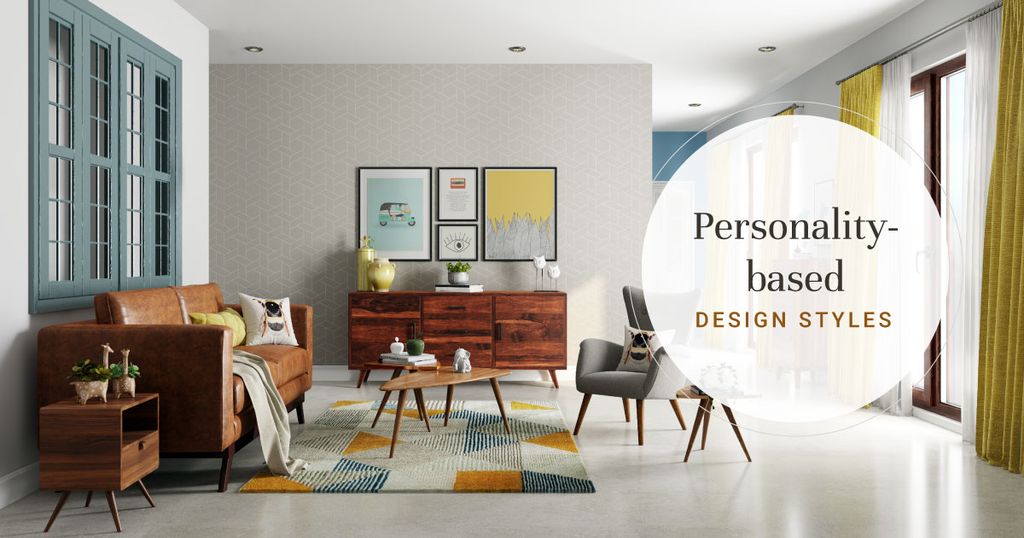
11. Industrial Interior Design: Embracing Raw and Unfinished Elements
Industrial interior design celebrates raw and unfinished elements, inspired by warehouses, factories, and other industrial spaces. It’s characterized by exposed brick walls, concrete floors, and metal accents.
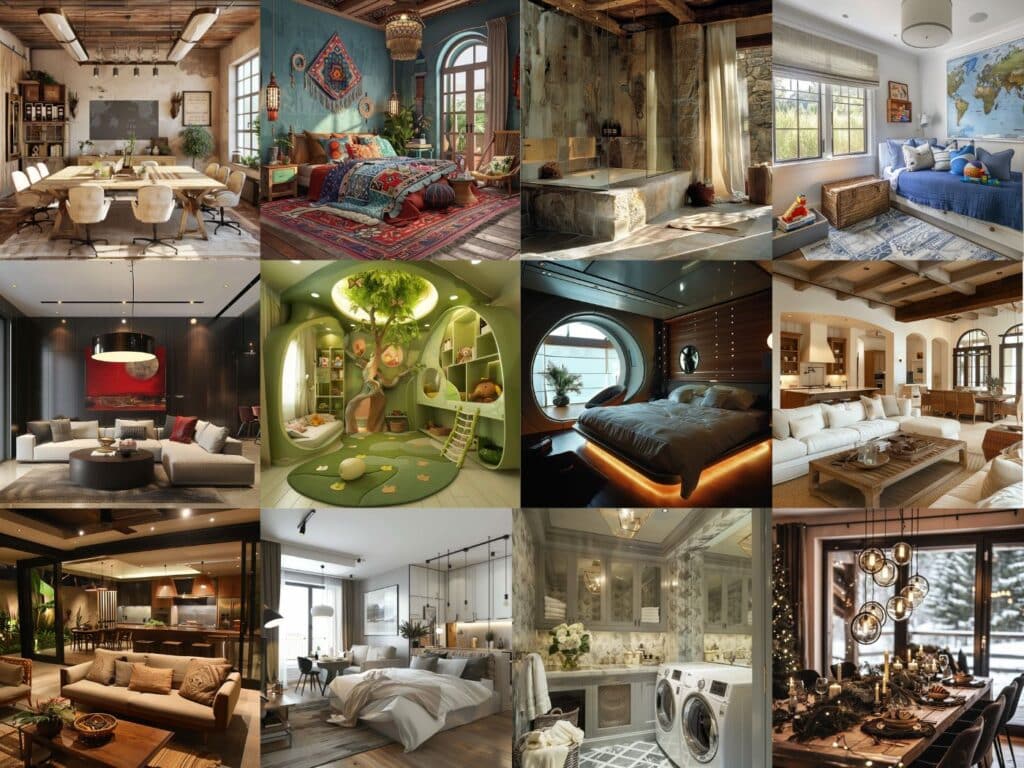
Key Elements:
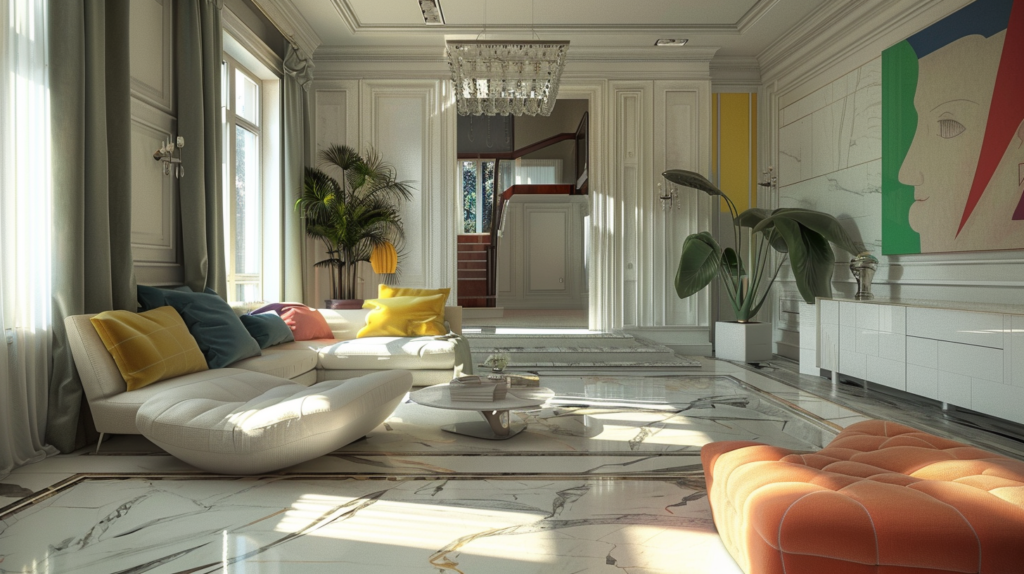
- Color Palette: Neutral colors like gray, black, and white are dominant, often with pops of color from exposed brick or metal accents.
- Furniture: Furniture is often made of metal, wood, and leather, with a focus on functionality and durability.
- Fabrics: Durable fabrics like canvas, leather, and denim are commonly used.
- Accessories: Industrial accessories include metal lamps, vintage signs, and exposed pipes.
- Architectural Details: Exposed brick walls, concrete floors, and exposed beams are characteristic of industrial interiors.
Who it’s for: Those who appreciate raw and unfinished elements and a functional, utilitarian aesthetic.
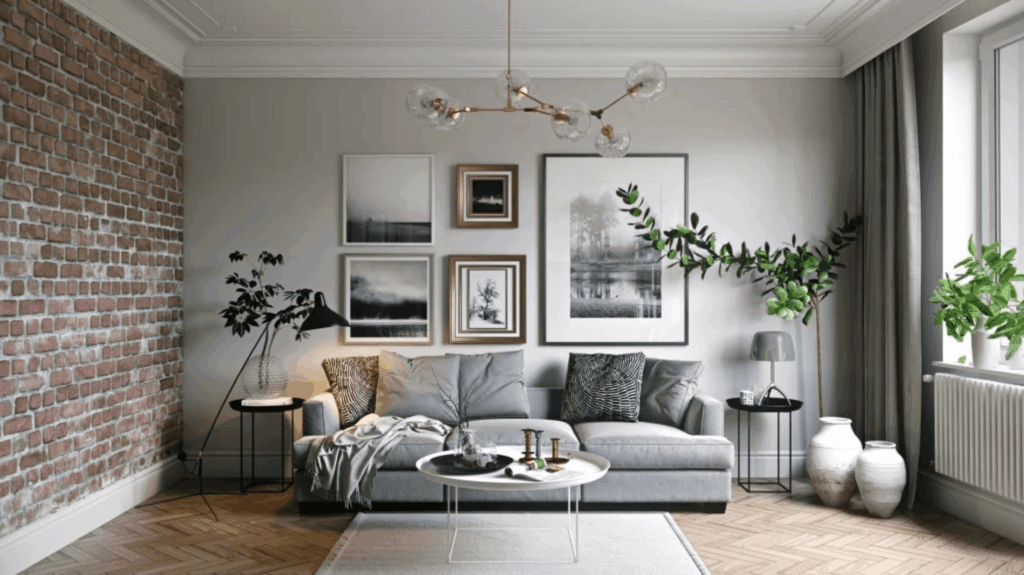
12. Asian Interior Design: Harmony, Balance, and Serenity
Asian interior design encompasses a variety of styles, including Japanese, Chinese, and Korean. However, all Asian styles share a common emphasis on harmony, balance, and serenity. It’s characterized by clean lines, natural materials, and a minimalist approach.

Key Elements:
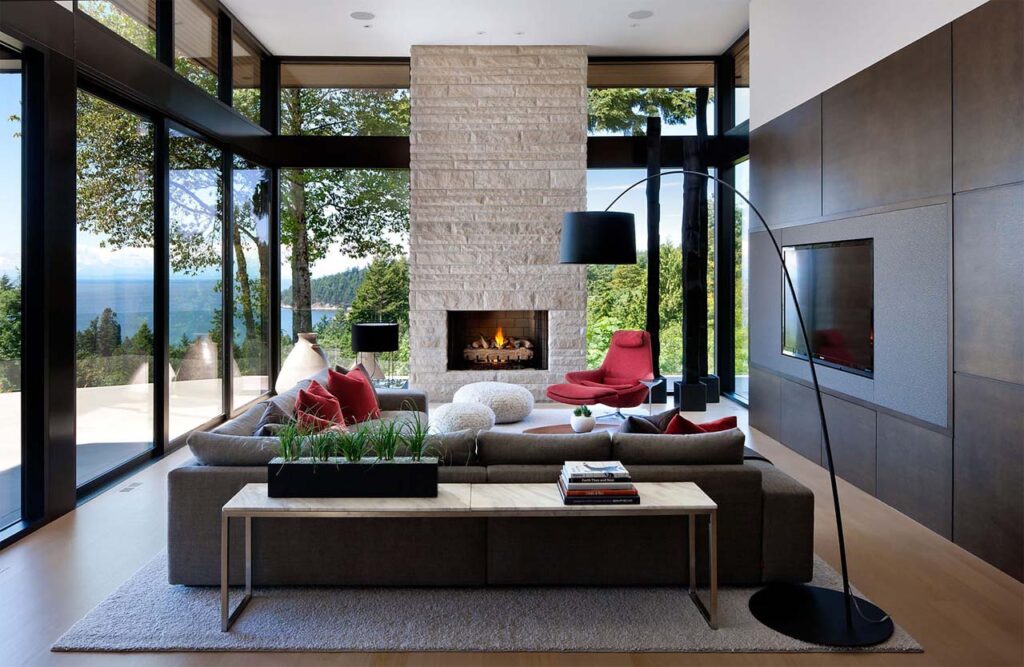
- Color Palette: Natural colors like brown, green, and beige are common choices, often with accents of red, black, or gold.
- Furniture: Furniture is typically made of wood, bamboo, or rattan, with clean lines and simple designs.
- Fabrics: Natural fabrics like silk, cotton, and linen are used extensively for upholstery, curtains, and bedding.
- Accessories: Asian accessories include bonsai trees, calligraphy, pottery, and silk screens.
- Architectural Details: Sliding doors, tatami mats, and shoji screens are characteristic of Asian interiors.
Who it’s for: Those who appreciate harmony, balance, and a serene and minimalist aesthetic.
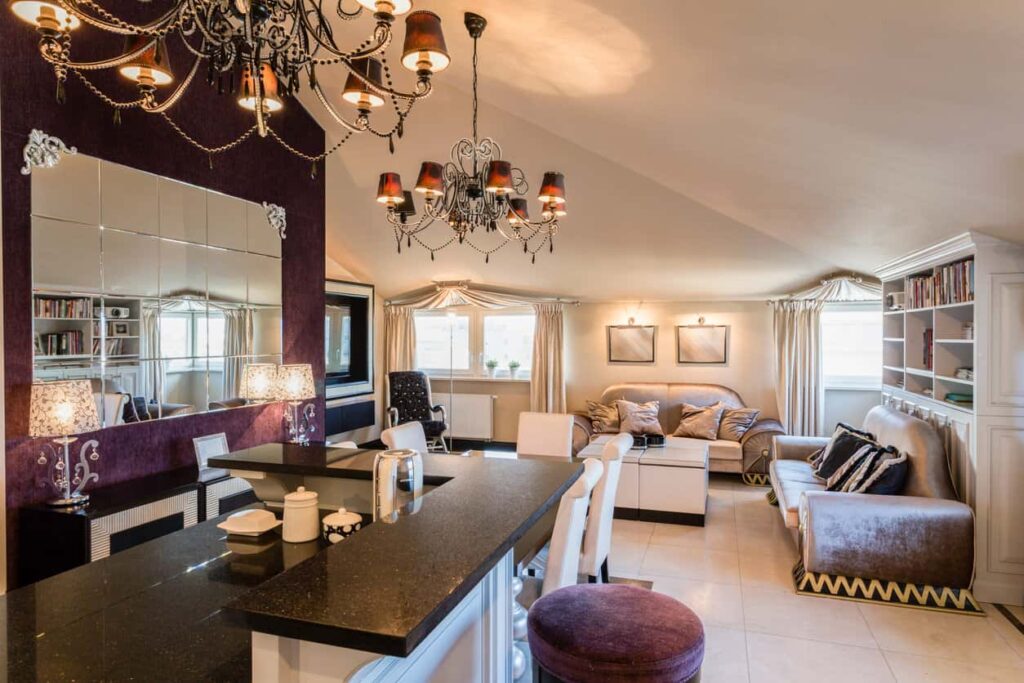
More Niche Interior Design Styles
13. Hollywood Regency Interior Design: Glamour and Opulence
Hollywood Regency is all about glamour and opulence, drawing inspiration from the Golden Age of Hollywood. Think luxurious fabrics, mirrored surfaces, and bold geometric patterns.
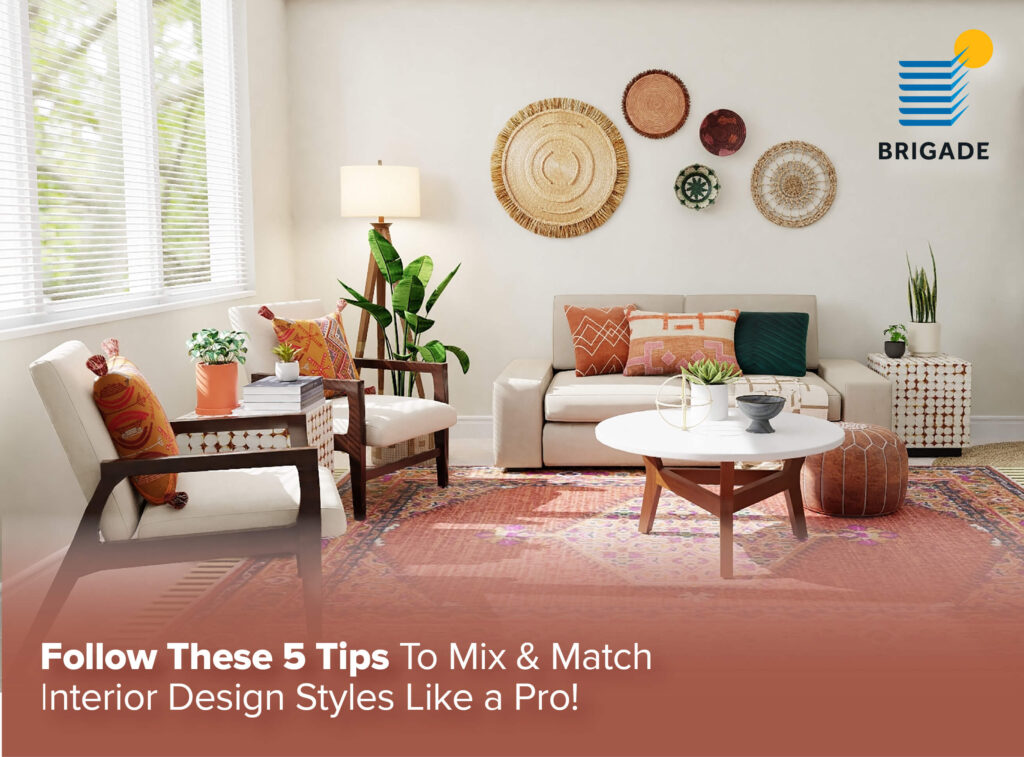
14. Art Deco Interior Design: Geometric Patterns and Rich Colors
Art Deco celebrates geometric patterns, rich colors, and luxurious materials. It’s a style that exudes sophistication and elegance, reminiscent of the 1920s and 1930s.
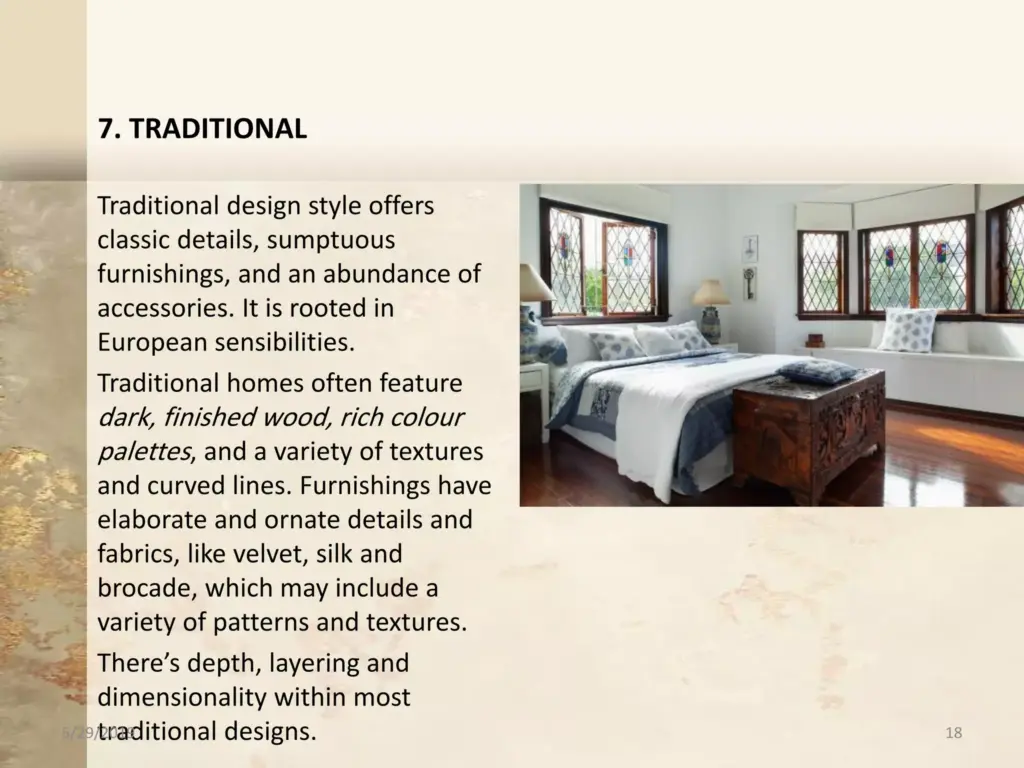
15. Farmhouse Interior Design: Rustic Charm and Cozy Comfort
Farmhouse interior design focuses on creating a warm, inviting, and comfortable space with rustic charm. Think reclaimed wood, vintage finds, and natural textures.
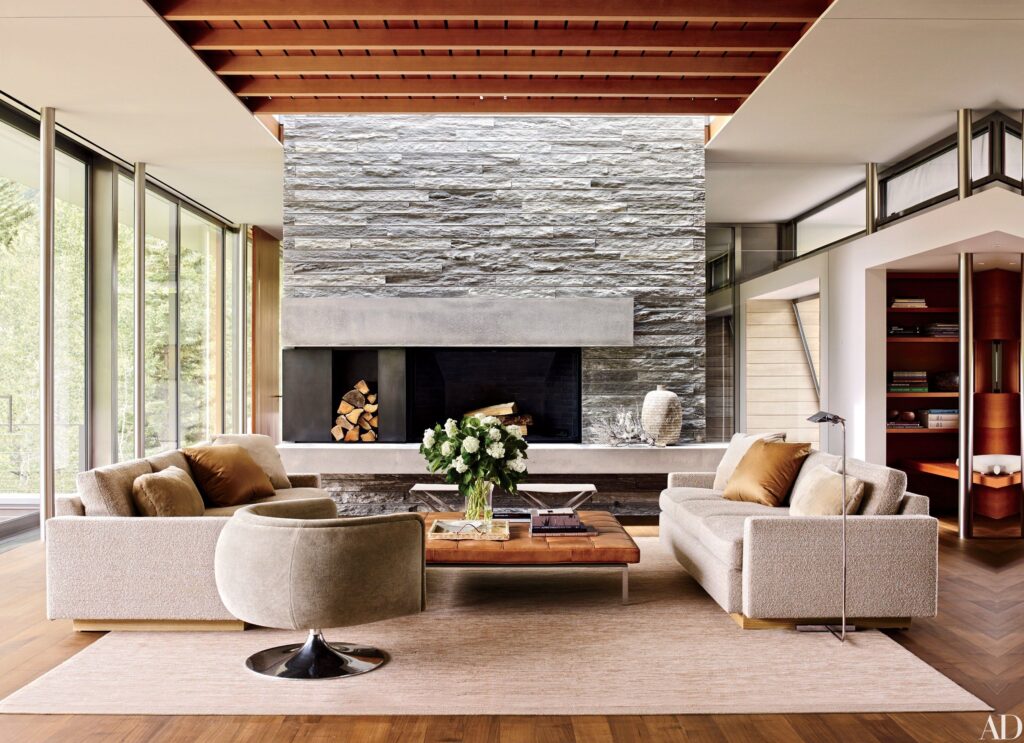
Finding Your Personal Style: A Process of Exploration and Discovery
Ultimately, the best interior design style is the one that reflects your personal taste and caters to your specific needs. Don’t be afraid to experiment with different styles and mix and match elements to create a truly unique and personalized space. Here are a few tips to help you find your personal style:
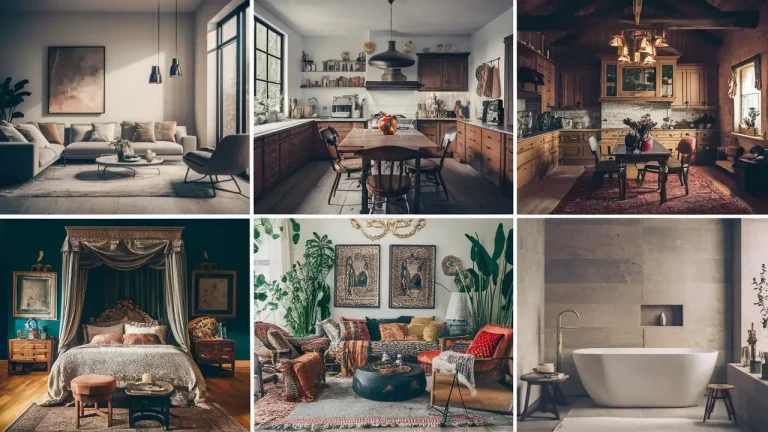
- Gather Inspiration: Browse magazines, websites, and social media platforms like Pinterest and Instagram to gather inspiration. Save images of rooms and furniture pieces that you find appealing.
- Identify Common Themes: Once you’ve gathered a collection of images, look for common themes and elements. Do you gravitate towards certain colors, patterns, or furniture styles?
- Consider Your Lifestyle: Think about how you use your space and what your needs are. Do you need a home office? A playroom for your children? A large dining area for entertaining?
- Don’t Be Afraid to Experiment: Try out different colors, patterns, and furniture arrangements to see what works best for you.
- Start Small: You don’t have to renovate your entire home at once. Start with one room or even just a small corner and gradually work your way through the rest of your space.
- Trust Your Gut: Ultimately, the best interior design style is the one that makes you feel happy and comfortable in your own home.
Beyond the Styles: Key Considerations for Any Interior Design Project
No matter which interior design style you choose, there are some key considerations that apply to any project:
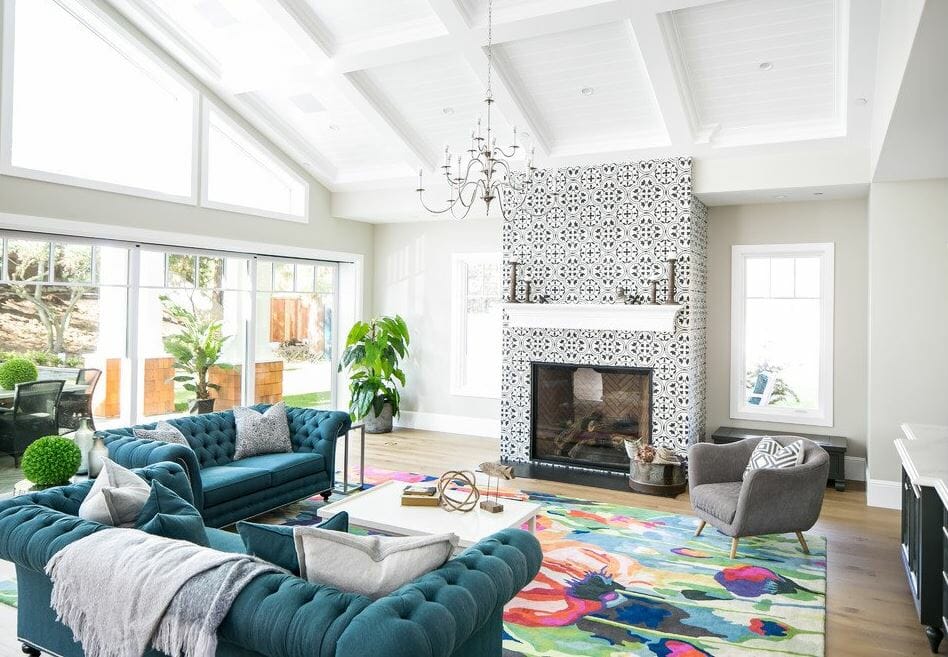
- Functionality: Make sure your space is functional and meets your needs. Consider traffic flow, storage, and lighting.
- Budget: Set a budget and stick to it. There are plenty of ways to achieve a stylish look without breaking the bank.
- Lighting: Lighting is crucial for creating the right atmosphere. Use a combination of natural and artificial light to brighten up your space.
- Scale and Proportion: Pay attention to the scale and proportion of your furniture and accessories. Make sure everything is in proportion to the size of the room.
- Balance: Create a sense of balance by distributing visual weight evenly throughout the room.
- Color: Choose colors that you love and that create the desired mood.
- Texture: Add texture to your space by using a variety of materials, such as wood, metal, fabric, and stone.
Conclusion: Creating a Home That Reflects You
Choosing the right interior design style is a deeply personal journey. Take your time, explore different options, and don’t be afraid to break the rules. By understanding the fundamental principles of each style and incorporating your own personal touches, you can create a home that reflects your unique personality and enhances your life. So, go ahead, unleash your creativity and transform your space into the dream home you’ve always envisioned!
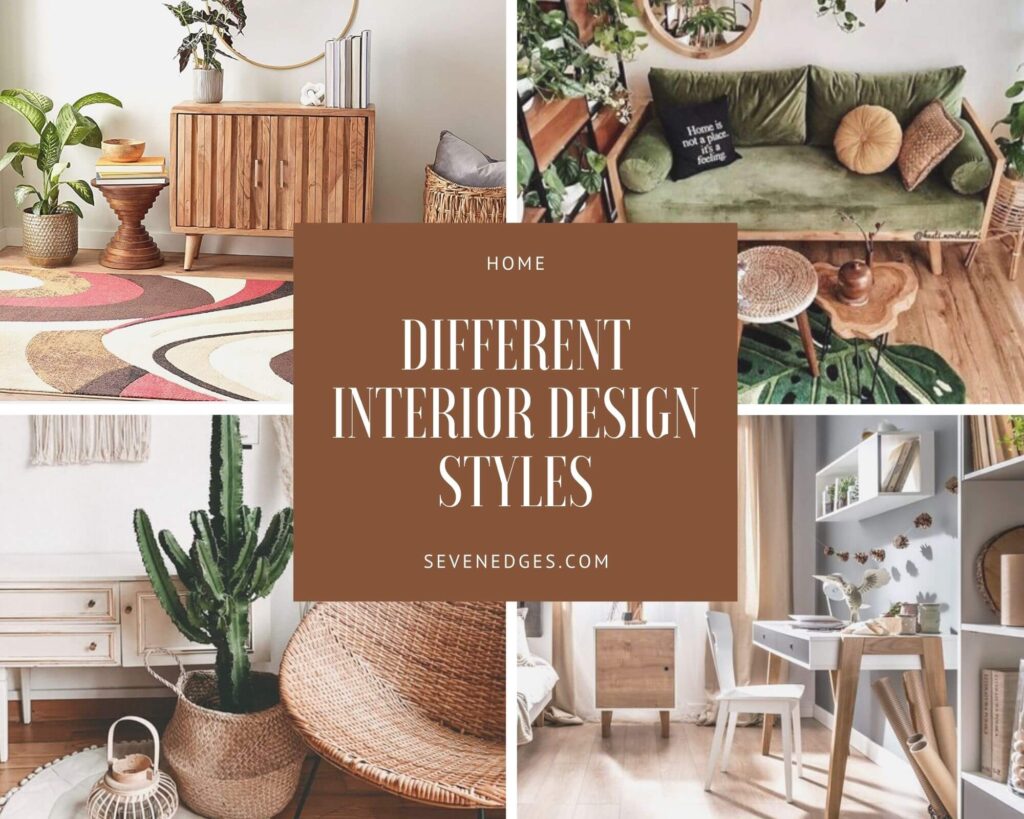
 Nimila
Nimila
